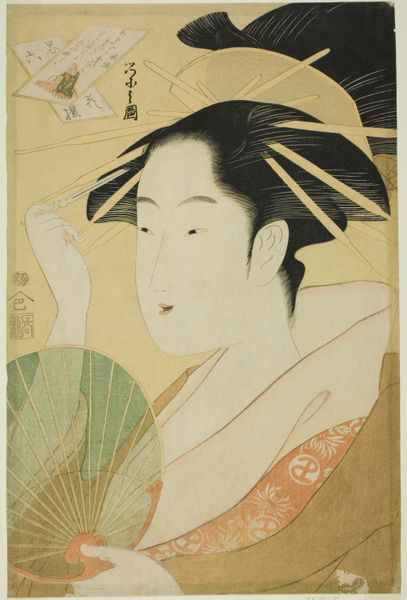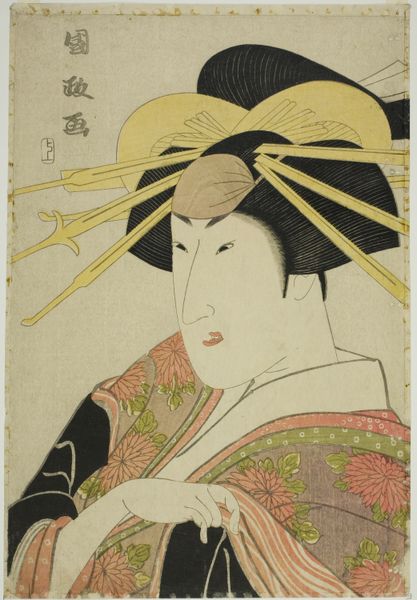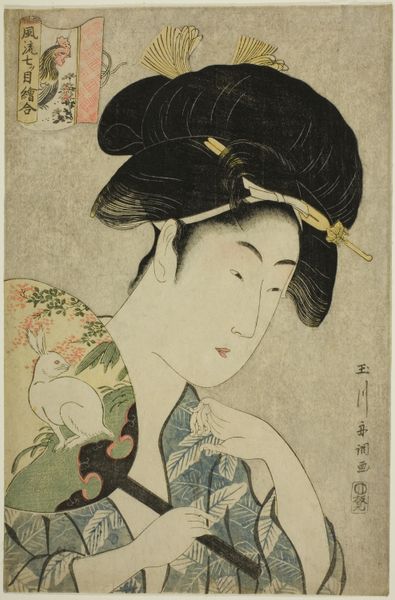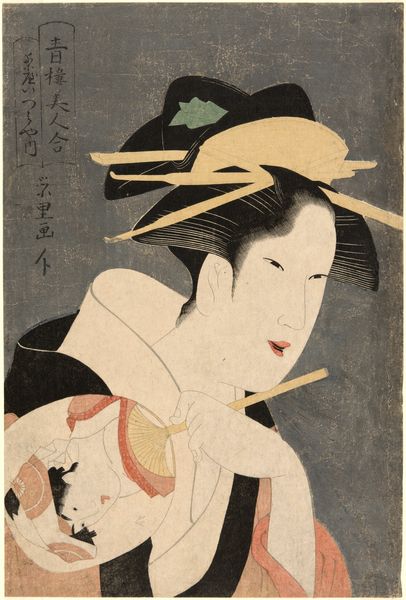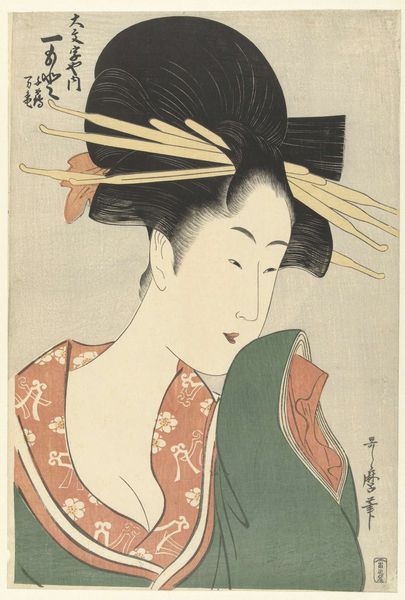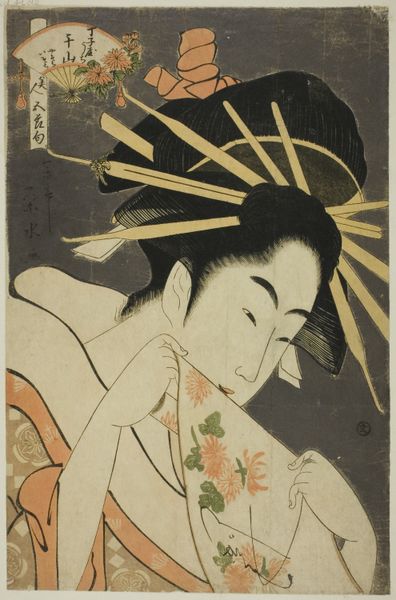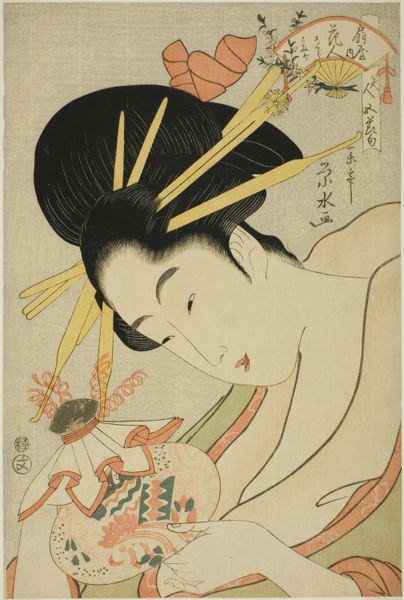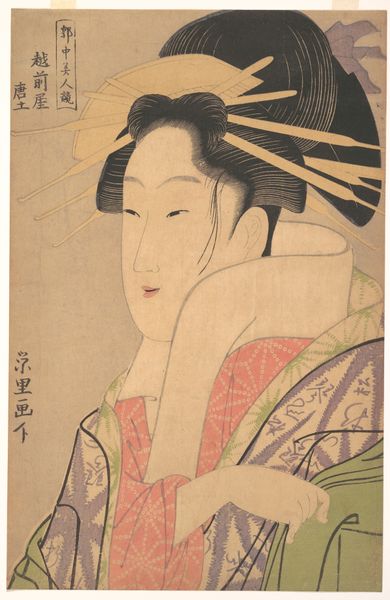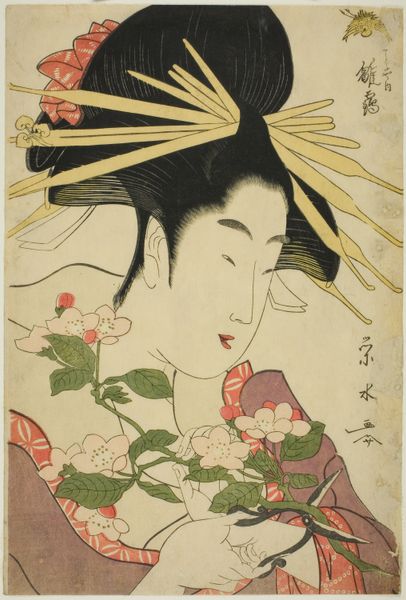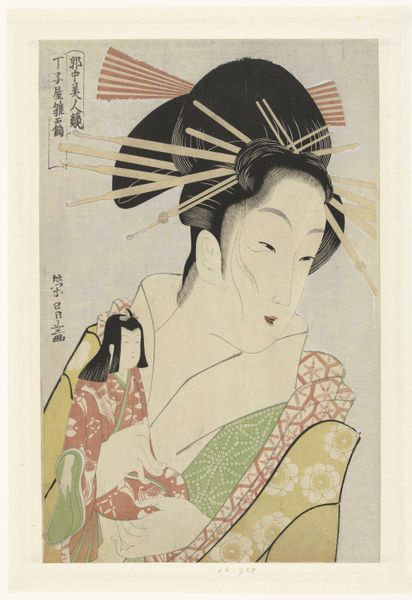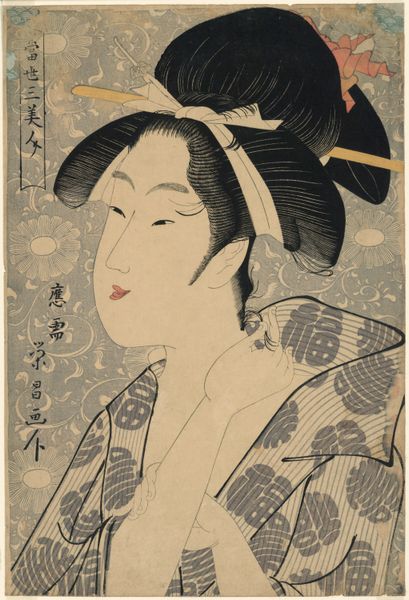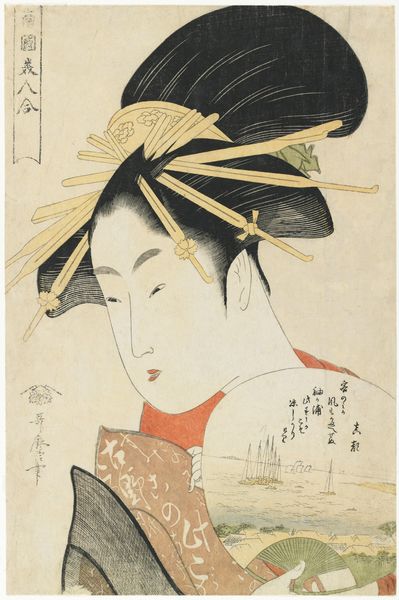
Misayama of the Chojiya, from the series Beauties of the Licensed Quarter (Kakuchu bijin kurabe) c. 1795
print, woodblock-print
portrait
asian-art
ukiyo-e
figuration
woodblock-print
orientalism
history-painting
calligraphy
Dimensions: 38.0 × 24.0 cm
Copyright: Public Domain
Editor: This is Chōkōsai Eishō's woodblock print, "Misayama of the Chojiya," created around 1795. The subject is quite captivating with her graceful pose and elaborate hair ornaments, but I’m curious to know more about the social context of this portrait. What does this image tell us about women's roles and status in Japan during that period? Curator: A vital question. Eishō's "Misayama" belongs to the ukiyo-e tradition, or "pictures of the floating world." It depicts a courtesan, part of the entertainment districts that flourished in Edo-period Japan. These images, seemingly innocuous, served a critical social function. They represented ideals of beauty, fashion, and cultural refinement. This wasn’t merely aesthetic; it reflected a complex interplay of economics and societal norms. How do you think these prints might have affected the status of the women depicted? Editor: I imagine these images would’ve solidified and publicized the courtesan's social status and influence on popular culture. But it seems paradoxical, doesn't it? To be celebrated in art, yet simultaneously confined to a specific role and place in society. Curator: Precisely. The "floating world" offered some women a space to gain economic power and cultural influence but within strict boundaries. Images like this, produced and consumed by a wide audience, reveal much about the negotiation between societal constraints and individual agency. Also, consider the male gaze inherent in these portraits. Were these images ultimately empowering for the subjects or exploitative? Editor: It's a truly intricate balancing act. I initially saw only beauty but now I can appreciate the historical and social complexity layered within the artwork. Curator: Indeed. It reminds us that even the most seemingly decorative art often participates in broader power dynamics and social dialogues. Analyzing visual culture through the lens of its historical moment helps us decipher the unspoken stories and cultural politics.
Comments
No comments
Be the first to comment and join the conversation on the ultimate creative platform.
